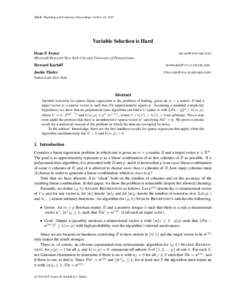<--- Back to Details
| First Page | Document Content | |
|---|---|---|
 Date: 2015-07-20 20:08:36Linear algebra Projection Matrix Multivariate random variable Linear combination Basis Vector space Euclidean algorithm Polynomial greatest common divisor |
Add to Reading List |
| First Page | Document Content | |
|---|---|---|
 Date: 2015-07-20 20:08:36Linear algebra Projection Matrix Multivariate random variable Linear combination Basis Vector space Euclidean algorithm Polynomial greatest common divisor |
Add to Reading List |